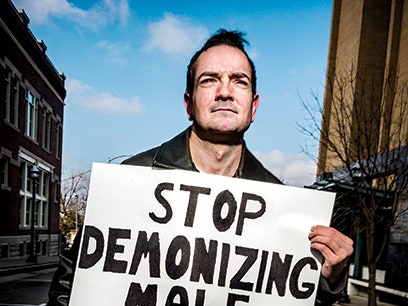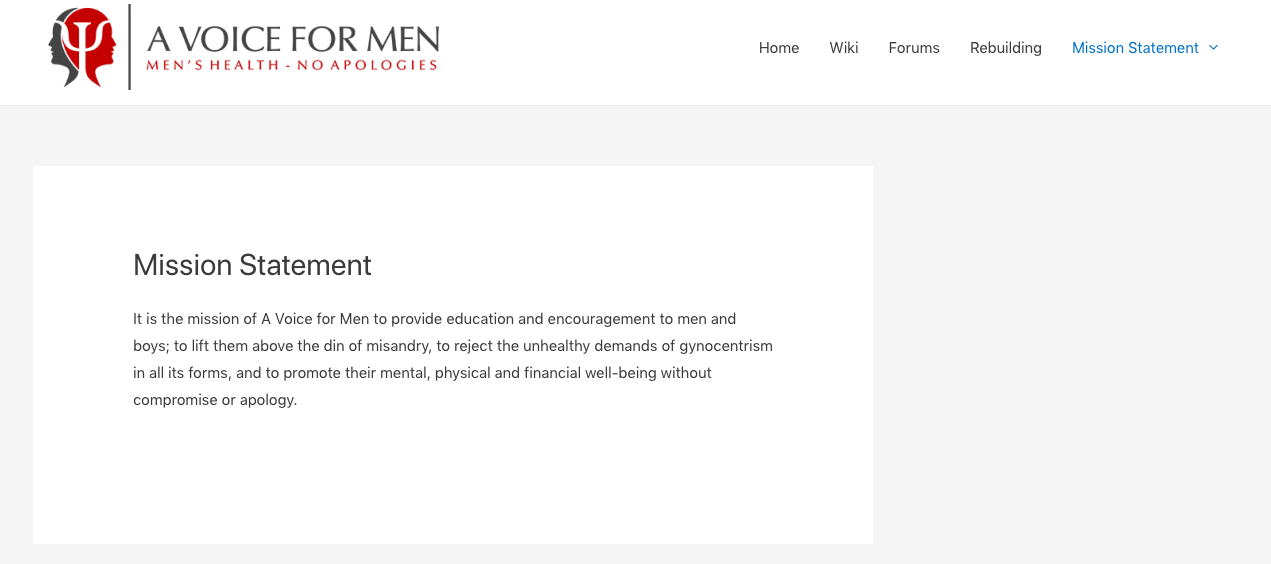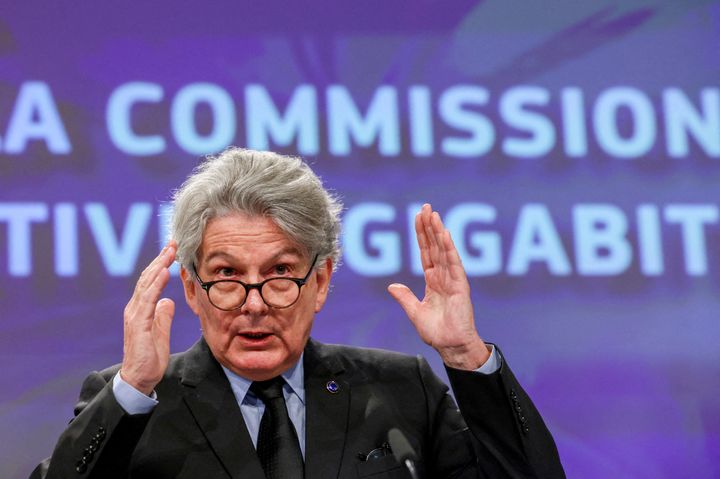Who are Men’s Rights Activists?

A few minutes every morning is all you need.
Stay up to date on the world's Headlines and Human Stories. It's fun, it's factual, it's fluff-free.
In some ways, Men’s Rights Activists (MRA) appear to be the male equivalent of feminists, a group of people – consisting of both men and women – dedicated to the equality of the sexes.
However, the history of the Men’s Rights Movement (MRM) is complex, fueled as much by genuine concerns for equality as disdain for feminism and women in general.
Depending on who is asked, the movement is either seen as a refuge for abused men or a breeding ground for misogyny and anti-female violence. As with most social movements, the reality is complicated.
The Men’s Rights Movement

For English speakers, the first gender-specific use of “men’s rights” to refer to the rights of males is generally credited to a February 1856 article in Putnam’s Monthly Magazine, a periodical that was once printed in New York City.
In an article entitled, “A Word for Men’s Rights,” the author argues for allowing men to divorce an “uncongenial wife.” The author laments that “the husband cannot lay his finger on his wife in the way of chastisement” without risking being arrested or sued for divorce.
The author suggests, with some of the trademark sexism of the era, that women should agree to the terms laid out in the article. “Women care nothing for logic,” the author asserts, “but they have a sense of justice and tender hearts.”
This appeal to equality – in this case, the equal right to petition for divorce in an unhappy marriage – has remained the core argument of the MRM ever since.
The cause of Men’s Rights Activists
According to Parity, a British men’s rights group, the goal of the MRM is equal rights for men and women. However, in practice, the focus of MRAs tend to be narrower.
MRAs, who often refer to themselves as anti-feminist, are predominantly white, straight and middle class according to research by Bethany M. Coston and Michael Kimmel, two sociologists who focus on gender issues.
In “White Men as the New Victims: Reverse Discrimination Cases and the Men’s Rights Movement,” Coston and Kimmel note that the movement’s cause is often framed as a “civil rights” issue, protecting a class of people who modern society allegedly feels free to oppress.
Increasingly, some white males report feeling discriminated against in their careers. They believe that minorities are being chosen over them to meet diversity quotas.
Affirmative action, a collection of policies that acknowledge demographics in college admissions and professional hiring, is meant to ensure fairer opportunities for underrepresented groups. MRAs view such policies as inherently discriminatory and have filed lawsuits to challenge them.
Other concerns for the movement include higher rates of male suicide and custody rights for fathers. As in the 1856 Putnam’s article, MRAs believe the legal system favors women in divorce and unfairly awards custody of children to mothers more often than fathers.
It is true that men manage to commit suicide at a higher rate than women and that women are more often awarded sole custody of children in America. Both issues, the MRM argues, are a reflection of a world that favors women over men. This view is labeled gynocentrism.

Find more statistics at Statista
MRA terminology
Groups with a devoted but insular following tend to develop or adopt common terminology as shorthand to express common beliefs and signify group membership. The MRM uses a few terms that appear regularly across websites and blogs devoted to the movement.
The mission statement of “A Voice for Men,” a popular website dedicated to the MRM, uses two of the most common terms: misandry and gynocentrism.
“It is the mission of A Voice for Men to provide education and encouragement to men and boys; to lift them above the din of misandry, to reject the unhealthy demands of gynocentrism in all its forms, and to promote their mental, physical and financial well-being without compromise or apology.”

Misandry, the linguistic counterpart to misogyny, is defined as hatred and prejudice aimed at men. In MRA spheres, misandry is often associated with “radical feminism,” a version of feminism allegedly focused on fighting or harming men, as opposed to actual gender equality.
Gynocentrism is the idea that the world is female-focused and that women are uniquely privileged because society protects them and upholds their interests. For MRAs, the existence of gynocentrism is an argument against the feminist notion of male privilege, the idea that society celebrates and defaults to the male perspective.
Violence and the Men’s Rights Movement

For MRAs, domestic violence is yet another issue where society unfairly privileges women.
MRAs claim incidences of psychological and physical abuse against men by a female partner are more common than reported but that, due to societal factors, men are often too ashamed or afraid to report the abuse.
In the 1970s, feminist campaigner Erin Pizzey founded the Chiswick Women’s Refuge in England, which ultimately launched the UK’s Refuge, a domestic violence charity. Pizzey now claims to have been “disowned by feminism,” in part because she has taken the stance that men are just as likely to experience domestic violence as women, albeit on more of a psychological level than on a physical one.
Outside the home, though, the MRM has received a few public black eyes for deadly acts committed by somewhat like-minded men.
Multiple mass killings have been perpetrated by men who openly expressed misogynistic views (almost all mass shootings in America have been committed by men).
In 2011, Anders Behring Breivik, a white nationalist, killed 77 people in Norway. Breivik wrote a 1,518-page manifesto to explain his acts that focused largely on Islam’s influence in Europe. It also decried “feminist ideology” and what Breivik saw as the denial of the “intrinsic worth of native Christian European heterosexual males.”
In 2014, Elliot Rodger killed six people in Isla Vista, California, before then killing himself. Like Breivik, Rodger left behind a manifesto, one that detailed why he loathed women and didn’t understand why women did not want to have sex with him, an “ideal magnificent gentleman” (in his own words).
A group of incels
Rodger became a hero to a subset of men who call themselves “incels,” short for “involuntary celibates.” He even inspired a copycat killer, Alek Minassian, who killed 10 people and injured 16 others by driving a van into a crowd in Toronto.
While incels are not necessarily MRAs, they share some similar views, including anti-feminist sentiments and a belief that straight males are oppressed by society. A common expression among both groups is “feminism is cancer.”
Both groups also use the term “red pill” (taken from the 1998 film, “The Matrix”) to refer to having their eyes opened to the way the world actually works. A subreddit entitled “r/TheRedPill” serves as a depository for posts about “sexual strategy in a culture increasingly lacking a positive identity for men.”
[article_ad]
Have a tip or story? Get in touch with our reporters here!
Sign up for daily news briefs from The Millennial Source here!




Comments ()